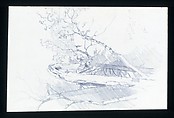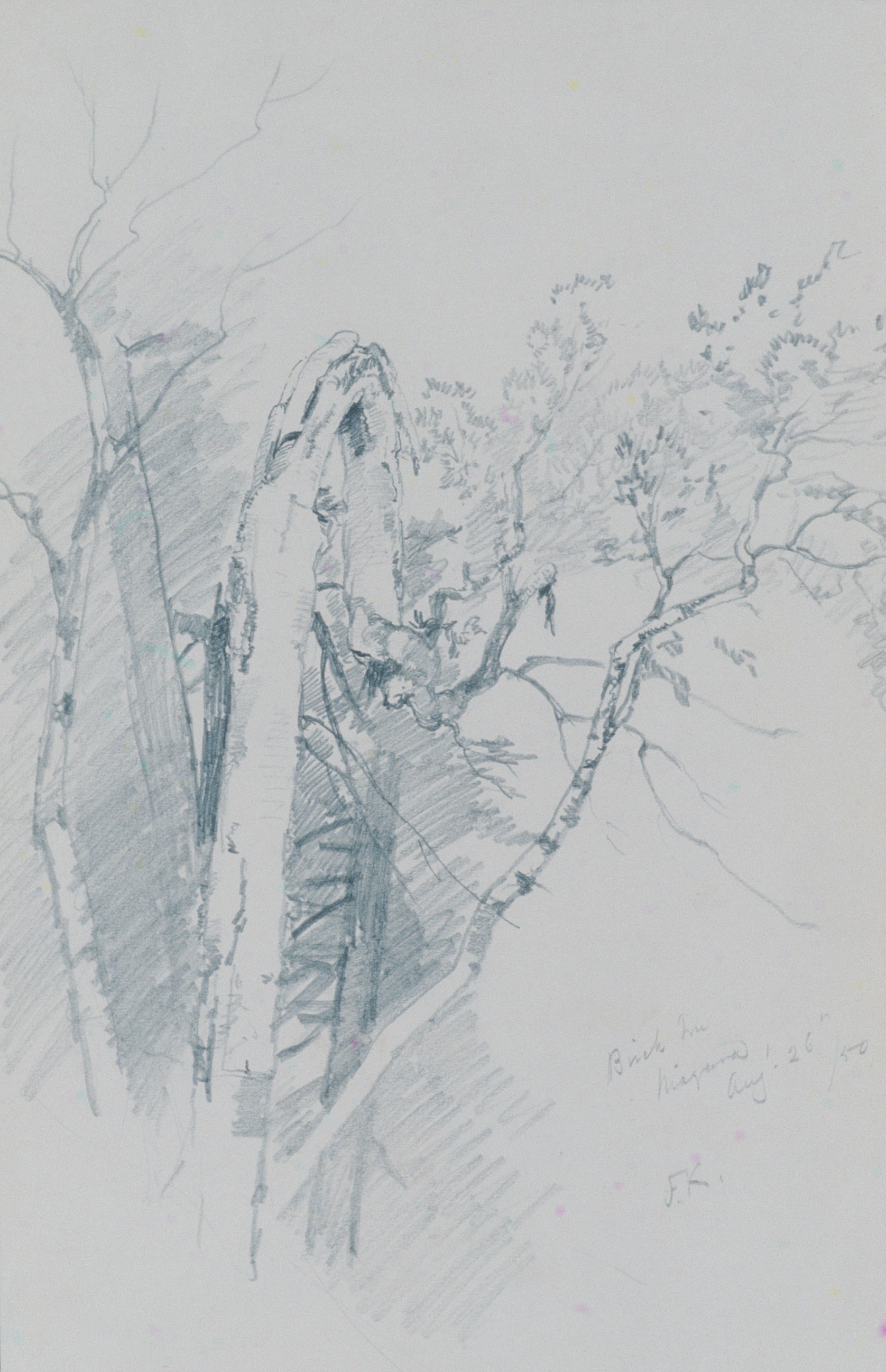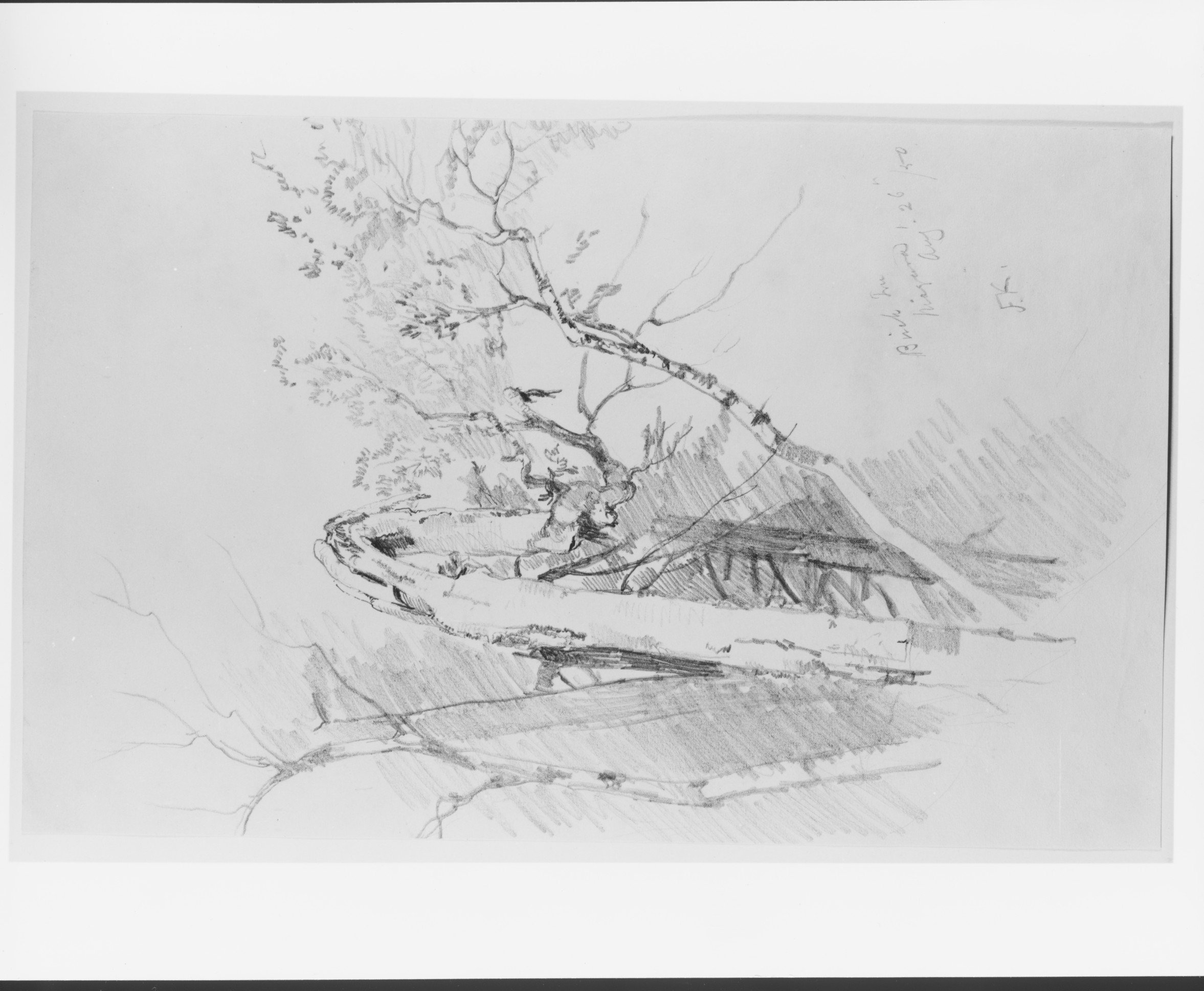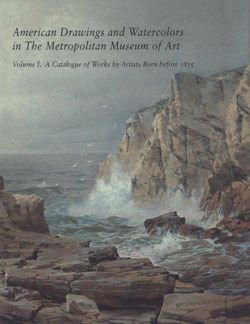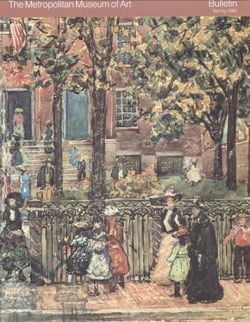Birch Tree, Niagara
John Frederick Kensett American
Not on view
This drawing was executed when Kensett was refining his skill in woodland and bucolic subjects; it probably manifests his steady purpose to understand the character and variety of trees, so that in composing a painting he might readily and truthfully fashion them to suit pictorial needs. The birch tree was particularly apt for inclusion in landscape paintings: its whiteness provides natural relief against the dark forest mass; it has a notable tendency to arching, lyrical growth. Kensett was evidently attracted to this tree by the unusual deformity of the trunk, which may reflect damage by water or, more likely, ice. The plume of vapor that constantly rises from the base of the great cascade of Niagara renders trees in the immediate vicinity eternally damp; in the winter they are burdened with ice that can bend or snap their boughs and trunks.
Due to rights restrictions, this image cannot be enlarged, viewed at full screen, or downloaded.
This artwork is meant to be viewed from right to left. Scroll left to view more.
